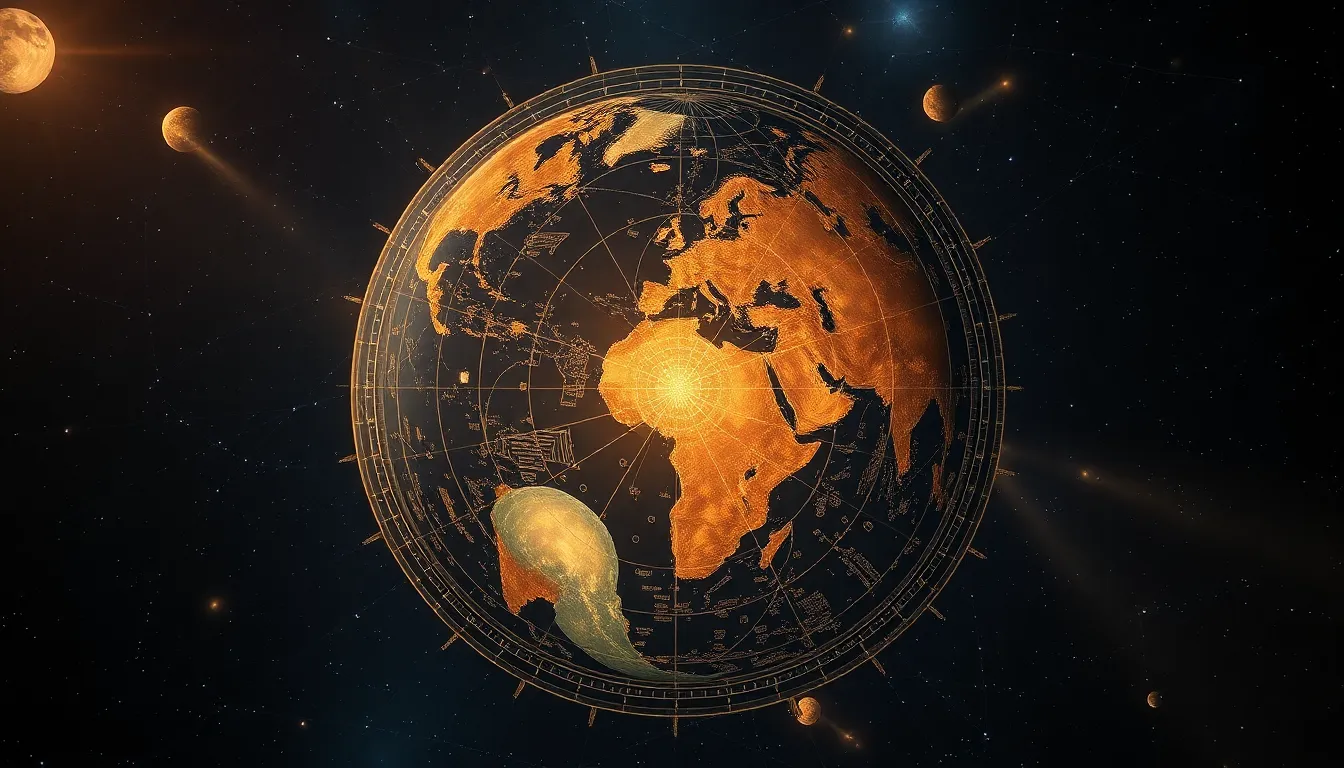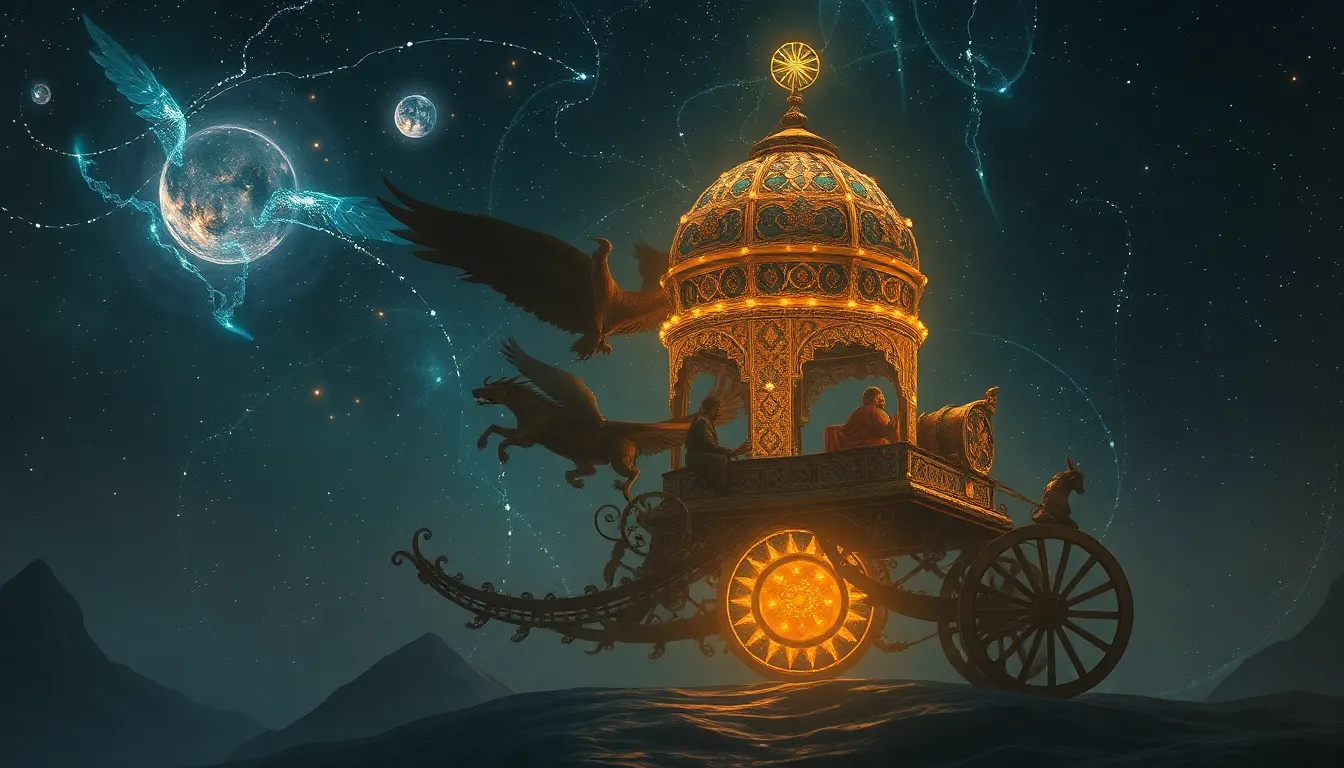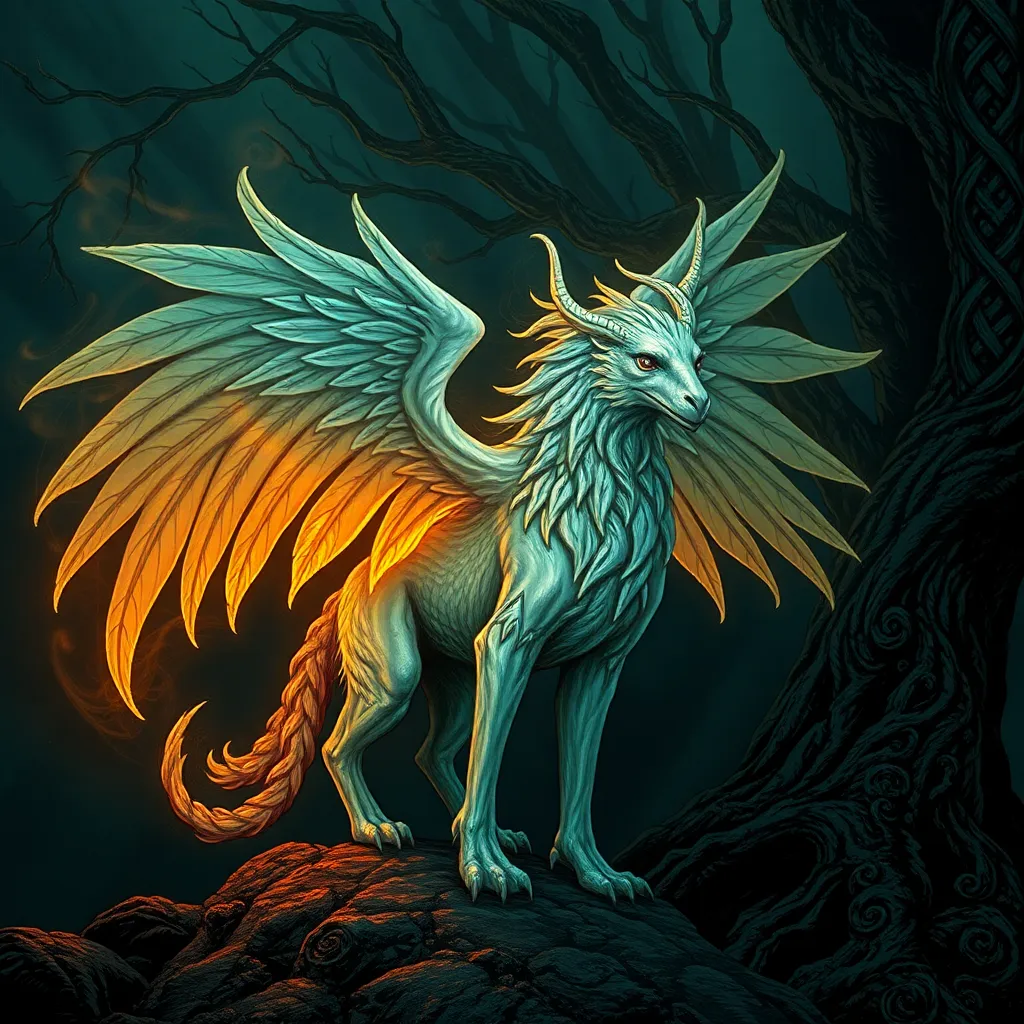The Celestial Globe: Mapping the Myths of the Cosmos
I. Introduction to Celestial Globes
A celestial globe is a spherical representation of the celestial sphere, showcasing stars, constellations, and other celestial phenomena. Historically, these globes have played a significant role in the study of astronomy and navigation, serving as vital tools for understanding our place in the cosmos.
The primary purpose of celestial globes is to depict the night sky from any perspective on Earth. They allow astronomers and navigators to visualize the positions of celestial bodies at any given time, enhancing their ability to predict astronomical events and navigate the seas.
II. The History of Celestial Globes
A. Early Beginnings: Ancient Civilizations and Their Contributions
The roots of celestial globes can be traced back to ancient civilizations such as the Babylonians, Greeks, and Egyptians. These cultures developed early models of the cosmos, often integrating their understanding of astronomy with mythology and religious beliefs.
- Babylonian Astronomy: The Babylonians created star catalogs and identified constellations that are still recognized today.
- Greek Innovations: Figures like Hipparchus and Ptolemy contributed significantly to celestial mapping, laying the groundwork for future globes.
B. Development Through the Middle Ages
During the Middle Ages, the use of celestial globes became more widespread in Europe, particularly among scholars who sought to preserve and expand upon ancient knowledge. Islamic scholars played a crucial role in this period, translating Greek texts and enhancing astronomical knowledge.
C. Renaissance Innovations and the Rise of Scientific Inquiry
The Renaissance marked a turning point in the development of celestial globes, as advancements in science and exploration led to new designs and more accurate representations of the sky. Notable figures such as Copernicus and Galileo contributed to this era, challenging previous models and promoting a heliocentric view of the universe.
III. Anatomy of a Celestial Globe
A. Key Components: The Sphere, Axis, and Ecliptic
A celestial globe typically consists of several key components:
- The Sphere: The main body of the globe, representing the celestial sphere.
- The Axis: The imaginary line around which the globe rotates, mimicking the Earth’s rotation.
- The Ecliptic: The apparent path of the Sun across the celestial sphere, marked on the globe.
B. Understanding Constellations and Their Placement
Constellations are arranged on the globe according to their positions in the night sky. Each constellation is depicted with its associated stars, often linked by lines to illustrate the mythical figures they represent.
C. The Role of the Horizon and Celestial Poles
The horizon line on a celestial globe separates the visible sky from the hidden sky. The celestial poles correspond to the Earth’s North and South Poles, providing a reference point for navigational purposes.
IV. The Intersection of Mythology and Astronomy
A. Constellations as Mythological Narratives
Many constellations have mythological origins, serving as a bridge between human stories and astronomical observations. Ancient cultures used these narratives to explain the mysteries of the night sky.
B. Cultural Variations: Greek, Roman, and Indigenous Interpretations
Different cultures have their unique interpretations of constellations:
- Greek and Roman: Often based on mythological figures such as Zeus and Hercules.
- Indigenous Cultures: Many indigenous peoples have their own constellations, often tied to their cultural narratives and environments.
C. The Influence of Myth on Celestial Mapping
Mythology has profoundly influenced how celestial bodies are mapped, with stories providing context and meaning to the stars and their arrangements.
V. The Celestial Globe in Different Cultures
A. European Perspectives and Historical Globes
During the Renaissance, European artisans crafted exquisite celestial globes, such as those by Martin Waldseemüller and Johannes Schöner, which were used as educational tools and status symbols.
B. Islamic Contributions to Astronomy and Celestial Mapping
Islamic scholars made significant advancements in astronomy, developing precise instruments and celestial globes that incorporated the knowledge of earlier civilizations.
C. Asian Interpretations: China, India, and Beyond
In Asia, celestial globes took on different forms and meanings. Chinese astronomers created their celestial globes utilizing unique cosmological concepts, while Indian astronomers developed their own models based on local traditions.
VI. The Art and Craftsmanship of Celestial Globes
A. Materials and Techniques Used in Globe-Making
Celestial globes were crafted using various materials, including wood, metal, and paper. Artisans often employed advanced techniques to ensure accuracy and aesthetics.
B. Famous Globe Makers and Their Masterpieces
Several globe makers gained notoriety for their remarkable work, such as:
- Gerard Mercator: Known for his detailed and innovative globes.
- Abraham Ortelius: Credited with creating some of the first modern atlases and globes.
C. The Role of Artistry in Scientific Tools
The creation of celestial globes showcases the intersection of art and science, where meticulous craftsmanship meets the pursuit of knowledge.
VII. The Celestial Globe in Modern Astronomy
A. Technological Advancements and Digital Replacements
With the advent of technology, digital planetariums and software have emerged, providing interactive experiences that replace traditional celestial globes. However, the charm of physical globes remains cherished by many.
B. Educational Uses in Astronomy and Planetariums
Celestial globes continue to play a role in education, serving as tools in classrooms and planetariums to teach about astronomy and celestial navigation.
C. The Continued Relevance of Celestial Globes in Public Engagement
Public interest in astronomy has led to a resurgence in the appreciation of celestial globes, often displayed in museums and educational institutions as a means to engage audiences with the wonders of the universe.
VIII. Symbolism and Interpretation of Celestial Maps
A. How Celestial Globes Reflect Human Understanding of the Universe
Celestial globes symbolize humanity’s quest for knowledge about the cosmos, representing the synthesis of science, art, and mythology.
B. The Spiritual and Philosophical Implications of Celestial Mapping
Celestial mapping has profound spiritual and philosophical implications, prompting reflections on our place in the universe and the nature of existence.
C. Navigating the Cosmos: Celestial Globes as Guides
Throughout history, celestial globes have served as navigational aids, guiding explorers and travelers across vast oceans and uncharted territories.
IX. Case Studies: Notable Celestial Globes Throughout History
A. The Hunt-Lenox Globe
The Hunt-Lenox Globe, dating back to the late 16th century, is one of the oldest known terrestrial globes, featuring a unique depiction of the world and celestial patterns.
B. The Armillary Sphere and Its Legacy
The armillary sphere, an ancient instrument for demonstrating celestial movements, laid the groundwork for modern celestial globes, showcasing the relationship between the Earth and heavens.
C. The Globes of the Astronomical Society of Paris
The globes created by the Astronomical Society of Paris are remarkable examples of precision and artistry, representing the scientific advancements of the 18th and 19th centuries.
X. Conclusion: The Enduring Legacy of the Celestial Globe
A. Reflections on the Importance of Celestial Mapping
Celestial globes hold an enduring legacy in the realm of astronomy and education, embodying centuries of exploration and discovery.
B. Future Directions in Astronomy and Cultural Preservation
As technology advances, the challenge remains to preserve the cultural significance of celestial globes while embracing new methods of teaching and exploration.
C. Encouraging a New


